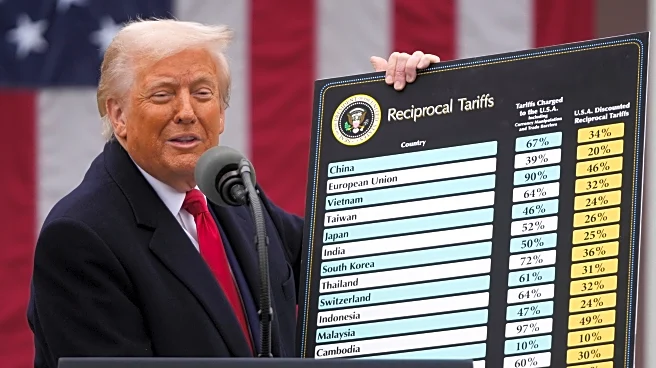What's Happening?
Soybean prices have seen a modest increase, with January soybeans rising by 3¼ cents to $11.11 per bushel. This movement comes amidst a broader market struggle, as corn and wheat prices experience slight
declines. The market is currently in a phase of consolidation, influenced by the anticipation of further details regarding a trade agreement with China. Karl Setzer, a partner at Consus Ag Consulting, noted that the initial bullish reaction to the trade agreement has diminished, with traders awaiting more concrete information before making significant market moves. Additionally, December live cattle prices increased by 22 cents to $231.32 per hundredweight, while January feeder cattle rose by $1.97 to $336.20 per hundredweight.
Why It's Important?
The fluctuation in soybean prices is significant for U.S. agriculture, particularly in the context of international trade relations. The tentative trade agreement with China holds potential implications for U.S. exports, as China is a major consumer of American soybeans. The market's cautious approach reflects the uncertainty surrounding the agreement's details, which could impact future trade volumes and pricing. The rise in cattle prices also indicates a positive trend for livestock producers, potentially offsetting some of the challenges faced by grain farmers. Overall, these developments could influence agricultural strategies and economic forecasts in the U.S. farming sector.
What's Next?
Market participants are likely to continue monitoring developments related to the Chinese trade agreement. Any confirmation or additional details could lead to more decisive market movements. Traders and agricultural stakeholders will be assessing the potential impact on export opportunities and domestic pricing. Additionally, the broader economic indicators, such as the S&P 500 and Dow Jones Industrial Average, which have shown positive movements, may influence investor sentiment and market dynamics in the coming weeks.
Beyond the Headlines
The current market situation underscores the interconnectedness of global trade agreements and domestic agricultural markets. The hesitancy in market movements highlights the importance of clear and reliable information in shaping economic decisions. Furthermore, the rise in cattle prices amidst grain market struggles may prompt a reevaluation of resource allocation and investment strategies within the agricultural sector.













